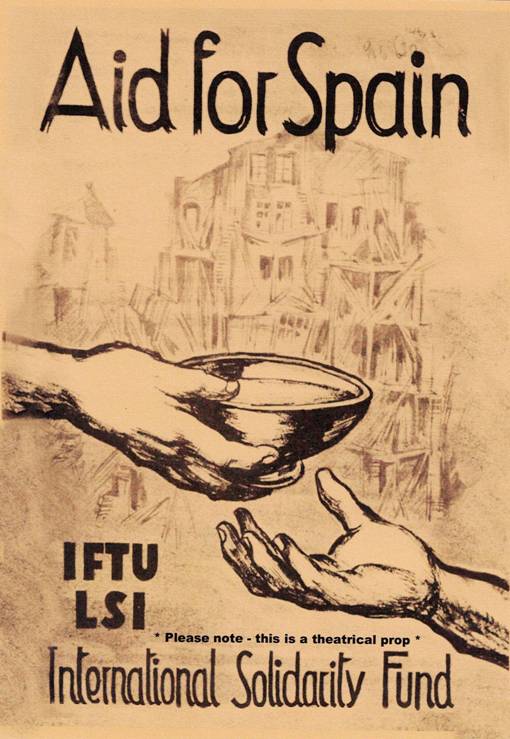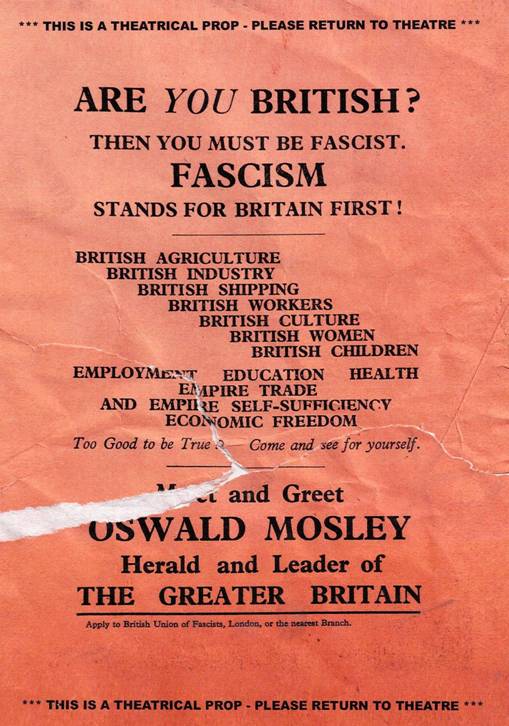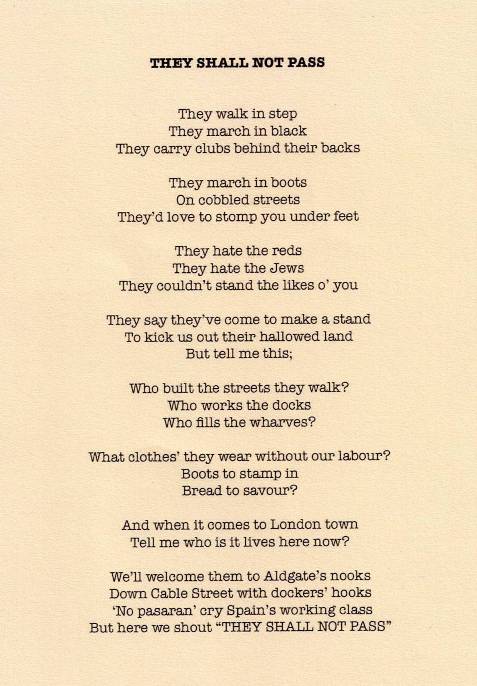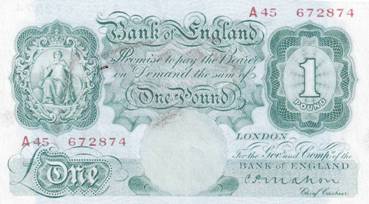
(seen at the afternoon performance on 5th March 2024)
Like many Londoners, the monkey has a deep connection with the 1936 Battle of Cable Street. Its ancestors took part in the brave stand against Fascism, and rarely spoke of it after - despite winning a victory against not just the British Union of Facists (BUF), but a determined faction of public opinion.
Composer and lyricist Tim Gilvin and book writer Alex Kanefsky realised, following a chance conversation at a new musical theatre concert event, that they were both fired by the story. Thus they joined forces to create this show.
Framing it using a present-day East End Walking Tour group works brilliantly to introduce simultaneously place, time and family connections. As American Kathleen Kenny (Debbie Chazen) blunders out of the tube station, “My Street” opens up the past.
We are introduced to the four main factions of the era. Edie and Ron Williams (Sophia Ragavelas - slightly under-used, Danny Colligan), English northerners moving to London for work.
Irish bakery worker / communist activist and poet Mairaid Kenny (Sha Dessi – handing out beautifully-drawn leaflets)

and her pub landlady mother, plus Sean and Orlaith (Max Alexander-Taylor and Aoife Mac Namara).
Jewish Scheinberg family unemployed Sammy (Joshua Ginsberg), studious brother Moishe (Ethan Pascal Peters), sister and parents Rosa, Rachel and Yitzhak (Jade Johnson, Sarah Leatherbarrow, Jez Unwin).
Finally there are the BUF, toy-town Nazis with Jez Unwin again as their bone-headed but determined leader. For a moment they seem to have the upper hand, but the United Kingdom has never been tolerant of extremism, despite the peddling of temptingly easy solutions.

Much of the first act is a hunt for employment and meaning as Sammy and Ron both experience soul-destroying rejection in their searches. Local political activism offers communism or fascism as ways to improve their situation. Ron chooses the latter and ultimately discovers the hollow truth.
The second half features “The Battle” itself, Jevan Howard-Jones choreographing distressing beatings of men and women alike as the police take sides against the local community.
Director Adam Lenson is inventive in the space and budget he has. A transformation from devout synagoguegoer to Blackshirt is chilling, Jez Unwin’s acting range shown to fine effect in a split-second moment.
Debbie Chazen likewise pulls out all stops as Irish mother becomes bovine police officer and Jewish mother (probably the hardest of that trio for her to play...).
The younger actors are equally impressive. Joshua Ginsberg’s optimism and resilience match his voice, while Danny Colligan varies anger and frustration to give his character the steepest emotional growth.
Sha Dessi has a belief and optimism, Jade Johnson timing to make her stand out in a small role, while as actor / musicians Max Alexander Taylor and Aoife Mac Namara add to the sound as well as the story.
The show itself is slightly uneven. Sammy’s “Hamilton” style rapping commentary is effective and gives the opening number a distinction which does not yet quite carry through the entire score.
Much of the rest is standard musical theatre after this start led us to expect more varied song styles. Multiple doubling of actors to play many characters is fine, so long as music establishes identities and family ties quickly and effectively.
Here, not every number happens for either that reason or to move the story forward as efficiently as it could. Indeed, a little more concise and rhythmic lyric throughout, plus a single iconic rallying song are required.
We want to know more about characters personal lives. Instead, much space is taken up reiterating their unemployment individually – something which could telescope into a single number.
The use of newspaper vendors to update us on public perception is unevenly spaced throughout the show, perhaps a plot device which could be introduced earlier and utilised to provide greater structure on which to hang the story.
A lengthy coda contains a considerable amount of fresh plot and one impeccable final scene from Howard-Jones and Lenson, demonstrating promise for the future of this show - particularly if this strand can also become an earlier part of the production’s spine.
Still, with so many direct parallels to today’s fractious atmosphere in London, the scheduling of this show cannot be improved. Likewise, this piece has all the elements present within itself to create a lasting and satisfying solution.

As with international politics there is a long and difficult journey ahead to shape what is there into a final form. When it happens, the world will be waiting and something remarkable will surely be achieved, just as it was back in 1936.
4 stars.

Photo credit: Jane Hobson. Used by kind permission.

